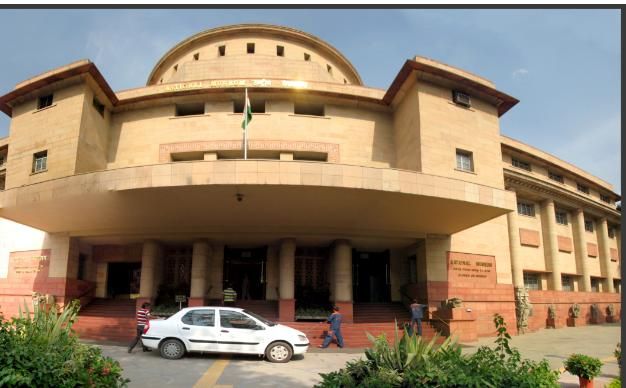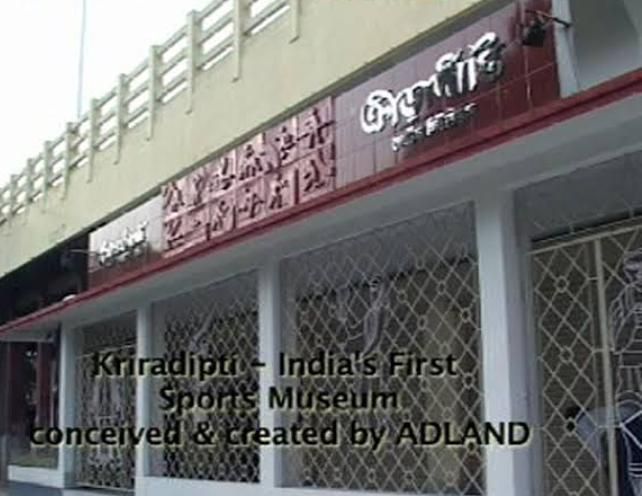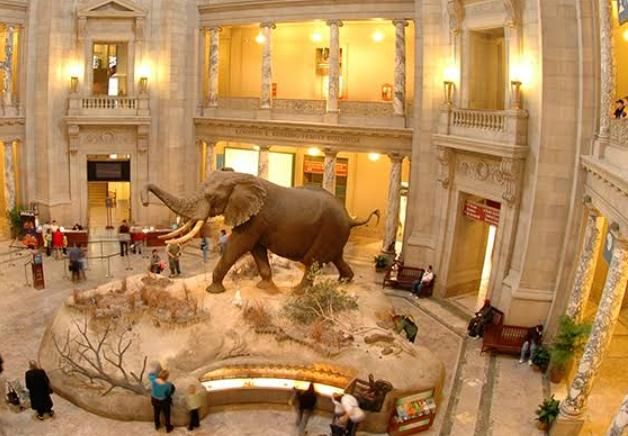5 Types Of Museums In India
May 14, 2019 • 4620 views
The role of a museum in any society is to highlight the essence of history, culture, religion, values and natural heritage with visual documents. These institutions acquire, conserve, research, communicate and exhibit antique items for the purpose of the study as well as enjoyment. Five categories of museums found in Indiaare :
GENERAL MUSEUMS:

The National Museum ,New Delhi.
General museums are those which have different types of collections gathered in the same place. Specimens of art, archaeology, numismatics, epigraphy, painting, manuscripts, arms, decorative arts, textiles, natural history, etc usually included within their scope. There are various examples of general museums in India, one of the most important ones being the Indian Museum of Kolkata. Its collection includes Gandhara sculptures, Bharut collection, Indian sculptures of different regions, numismatics, musical instruments, the Nahar collection of Oriental art, textiles, paintings, and Tibetan Thankas. Other examples of general museums include the Salar Jung museum of Hyderabad, The National Museum of New Delhi, The Assam state museum of Guwahati and The Bhagalpur museum of Bihar.
ART MUSEUMS:

Sanskriti Museums , New Delhi.
Art museums are the institutions which exhibit aesthetically valuable objects belonging to rich cultural heritage. Their specimens usually include collected paintings, sculptures, decorative arts, etc. Examples of some of the renowned art museums in the country are Jagdish and Kamla Mittal Museum of Indian Art in Hyderabad, Sanskriti Museums of New Delhi, Museum of Christian Art in Goa, Dogra Art Museum of Jammu, etc. There are mainly three different types of art museums they are;
1)Modern Art museums: They provide exhibitions of contemporary art productions, often in experimental stages. The National Gallery of Modern Art in New Delhi is an important example in this context. Presenting the translation of art forms since 1857, the Museum displays paintings, sculptures, and graphics by Indian as well as international modern artists.
2)Folk Art Museums: They possess collections that reflect the vigor and vitality of rural life, along with the with a vivid picture of social traditions, religious beliefs, practices, and motifs. Examples of such museums include the Bharatiya Lok Kalamandal Museum of Udaipur, Uruswati Himalayan Folk Art Museum of Kullu, the Home of Folk Art, Gurgaon and the Lok Kala Sangrahalaya of Lucknow.
3)Crafts Museums: They mostly exhibit works by trained or professional artisans belonging to a particular school or region. The National Handicrafts and Handlooms Museum in New Delhi contains a collection of traditional Indian crafts in textiles, metal wood, and ceramics. The Sibsagar College Museum in Asim, the Bharatiya Nritya Kala Mandir in Patna, the Arts and Crafts Museum in Bhavnagar are some of the renowned crafts Museums in India.
HISTORY MUSEUMS:

The Lalbhai Dalpatbhai Museum , Ahmedabad.
History museums are set up to preserve and exhibit relics of the past that pertains to historical and cultural heritage. They can be further classified into archaeology museums, Personalia museums, biological and birthplace museums, memorial museums, jail museums, palace museums, transport museums, defense museums, etc.
Archaeology Museum's preserve prehistory and protohistory acrylics like statutory art, pottery, coins, tool, etc which have witnessed revolutionary changes in cultural development. Examples include the Sri KSR District Archaeological Museum of Anantpur, the Bhagwan Mahavir Museum of Cuddapah, the Baudhasree Archaeological Museum of Guntur, The Lalbhai Dalpatbhai Museum of Ahmedabad and the Tulsi Archaeological Museum of Satna.
Personalia museums are established within a building was a great person has spent some time in his life. For example the Step Aside in Darjeeling where Deshbandhu Chittaranjan Das passed away in 1925.
Biographical museums depict the life, philosophy, and activities of a great personality. For example the Gandhi Smarak Sangrahalaya or on the chain of Museums dedicated to the memory of Gandhi.
Birthplace museums are set up in a building where a great personality was born. For example, the Rabindrabharati Museum is established in the ancestral house of Tagore at Jorasanko in Kolkata.
Memorial museums, on the other hand, commemorate a great person or event. A famous example is the Victoria Memorial Hall in Kolkata.
jails that their historical importance, when converted to museums are called jail museums. The most important example here is the Cellular Jail National Memorial in Port Blair.
when the main building in a palace complex is converted into a museum with all its collections, it is called a Palace Museum. Important examples include the Coochbehar palace Museum of West Bengal and the Padmanabhapuram palace Museum of Tamilnadu.
The concept of transport museums can be better understood when listed as rail, water, and air transport. As the name suggests, the rail transport Museum preserves the Heritage of railways. They preserve and exhibit the historical records and documents, vintage engines, history of rail development, etc. The National rail Museum situated in Chanakyapuri, New Delhi is known to be the first of its kind in the country. Air transport museums, on the other hand, showcase the history of our naval aviation, weapons, sensors, aircraft, rare photographs, etc. An example of this kind is the Naval Aviation Museum of the Dabolim, Goa. A water transport Museum primarily preserves different types of seafaring boats, objects from the wreckage, documents, metals, photos, letters, etc bearing witness to the history of ships and sailors. An example is the National Maritime Museum of Mumbai.
Defense museum compiles various things related to military activities. They include badges, medals mementos, peace accords, the account of war personal, etc. A famous example for a defense Museum is the Gallery Museum of Punjab Regimental Centre in Jharkhand which preserve the regiment belongings, war trophies, uniforms, guns, flax, medals, etc.
SPORTS MUSEUMS:

The Kriradipti in Siliguri, North Bengal.
These museums document both general and specialized sports activities. The exhibits Here include dresses of different sports and sportspersons, medals, trophies, photographs, etc. The Sports Museum under the Sports Authority of India in New Delhi and The Kriradipti in Siliguri, North Bengal are examples.
SCIENCE MUSEUMS:
Science museums collect and exhibit specimens of natural science, physical science, the evolution of scientific ideas and technology, its applications, specimens resulting from scientific and technological researches, etc. There are different types of science museums in India and one of them is the natural history Museum which deals with the natural world. It consists of different aspects of science like taxonomy, biology, ecology, food chains, etc. The National Museum of Natural History in New Delhi is one of the significant examples.
Another type of science museum is the zoological museum. It includes the fauna of a region or country mostly in the forms of stuffed animals, Fossil remains, demonstration of the physical processes of life, etc. Zoological Museum of Punjab University in Chandigarh, the Museum of Arthropoda in Pune, Zoological Museum of Gurukula Kangri University in Uttarakhand, etc are some of the examples of such museums in the country.
Then there is the botanical Museum which preserves the flora of the country. Their exhibits include the Fossil of trees, seeds, crops, plant specimens, etc. The Museum of the Botanical Survey of India in Pune is an example of this kind.
Another type of science museum is the forest museum. These institutions provide information on various fields of forestry, forest biology, wildlife, Timber specimens, etc. For example the Forest Museum of Haddo in Andaman and Nicobar Islands and Assam forest Museum in Guwahati.
Agricultural museums are those that preserve and exhibit everything connected with the agricultural civilization and materials of rural life. Different kinds of agriculture tools and materials associated with forestry, hunting, fishing, etc can be found here. Examples include the Agriculture Museum at Imphal and the Museum of Rural Life of Punjab under the Punjab Agricultural University.

The National Museum of Natural History , New Delhi.
